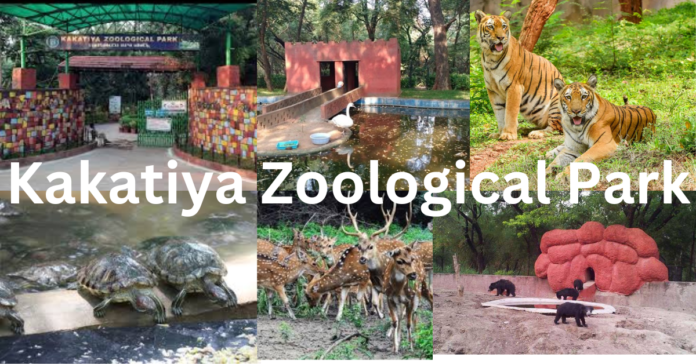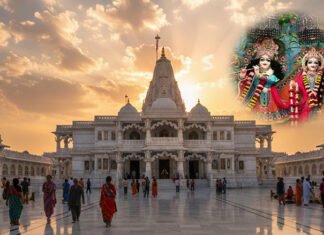Introduction to Kakatiya Zoological Park
Kakatiya Zoological Park, also known as Vana Vigyan Park, is a key spot for wildlife conservation and environmental education in Warangal, Telangana. Located in the heart of this historic city, the park is a sanctuary for many plants and animals, offering a peaceful escape for nature lovers, families, and researchers. With its lush greenery and well-kept facilities, the park is perfect for learning about nature and the importance of protecting wildlife. Inspired by the Kakatiya dynasty’s legacy of supporting arts, culture, and the environment, Kakatiya Zoological Park has become a top destination for both fun and learning, attracting visitors from near and far.
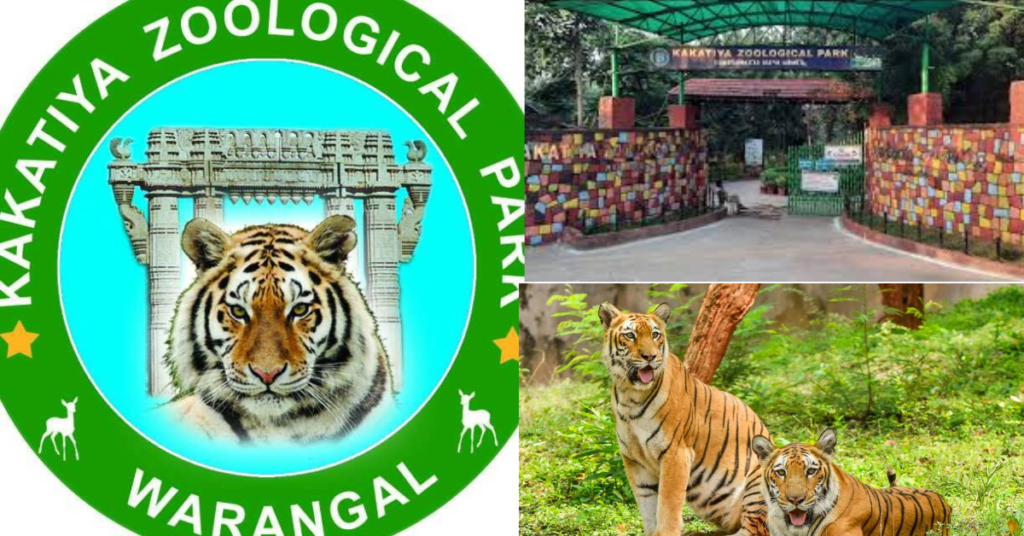
Also Read: Medaram Jathara South Asia’s Largest Tribal Festival
Historical Background Kakatiya Zoological Park
The Kakatiya Dynasty
The Deccan region of India is globally recognized for the architectural, cultural, and environmental advancements made by the Kakatiya dynasty, which existed from the 12th to the 14th century.. When the dynasty ruled, Warangal, the capital, developed into a hub of power and a center of cultural revival. The Kakatiya rulers, particularly Queen Rudrama Devi and her successor Prataparudra, were instrumental in building an extensive network of temples, forts, and irrigation systems, many of which stand as a testament to their legacy today.
Establishment of Kakatiya Zoological Park
Kakatiya Zoological Park was established with the dual purpose of preserving the region’s rich biodiversity and providing a green oasis for the residents and visitors of Warangal. The idea was to create a space where people could connect with nature learn about the local wildlife, and develop a deeper appreciation for the environment. To ensure that the park could support a wide variety of plant and animal species, it was carefully designed to integrate a variety of natural ecosystems.
Over the years, the park has undergone significant development, with continuous efforts to enhance its infrastructure, expand its collections, and improve visitor facilities. Today, Kakatiya Zoological Park symbolizes Warangal’s commitment to conservation and environmental education.
Attractions at Kakatiya Zoological Park
Diverse Wildlife
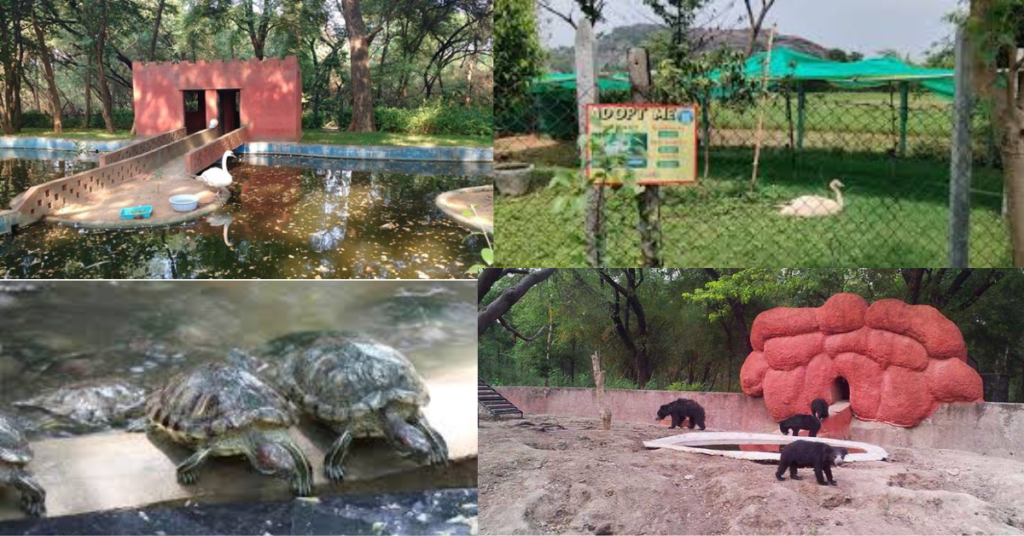
Family vacationers and wildlife enthusiasts appreciate Kakatiya Zoological Park because it is home to a wide variety of animal species. The park’s well-kept enclosures and natural habitats offer a safe environment for the animals and let visitors see them up close.
- Mammals: The park has several types of mammals, including deer, monkeys, and various smaller animals. Each species lives in an area that closely mimics its natural habitat, ensuring its well-being.
- Birds: Bird watching is a popular activity here. Visitors can spot peacocks, parrots, and other native and migratory birds.
- Reptiles: The park also has a collection of reptiles, such as snakes and lizards, in secure and well-maintained enclosures.
Also Read: Ultimate Guide to Laknavaram Lake: Nature’s Hidden Gem
Nature Trails and Walking Paths
One of the highlights of Kakatiya Zoological Park is its extensive network of nature trails and walking paths. These trails wind through the park, allowing visitors to explore at their own pace. The trails are well-marked and provide opportunities for spotting wildlife and enjoying the diverse plant life.

Botanical garden
The park features a botanical garden showcasing a wide variety of plants. This part of the park is especially popular with botanists and plant enthusiasts. The botanical garden is not only beautiful but also educational, highlighting the importance of plant conservation.
Huge trees and floral plants alike make up the park’s abundant variety of plant life. The well-maintained gardens and green spaces provide a serene environment for visitors.
- Trees: The park is home to numerous tree species, including both native and exotic varieties. These trees not only enhance the park’s beauty but also provide essential habitat and food for the wildlife.
- Flowering Plants: The botanical garden within the park features a wide array of flowering plants. These plants add vibrant colors to the park and attract various pollinators, such as butterflies and bees.
- Medicinal Plants: The park also has a section dedicated to medicinal plants. The traditional medical applications of numerous plants are highlighted in this especially informative area
Educational Programs and Workshops

Kakatiya Zoological Park is dedicated to promoting environmental awareness and conservation education. The park runs various educational programs and workshops for students, teachers, and the public. These programs cover topics like wildlife conservation, biodiversity, and sustainable practices.
- School Programs: The park works with local schools to organize field trips and educational tours, giving students hands-on learning experiences and fostering a love for nature.
- Workshops and Seminars: Regular workshops and seminars are held at the park, featuring experts in wildlife conservation and environmental science. These events provide valuable insights and practical knowledge on various aspects of conservation.
Conservation Efforts at Kakatiya Zoological Park
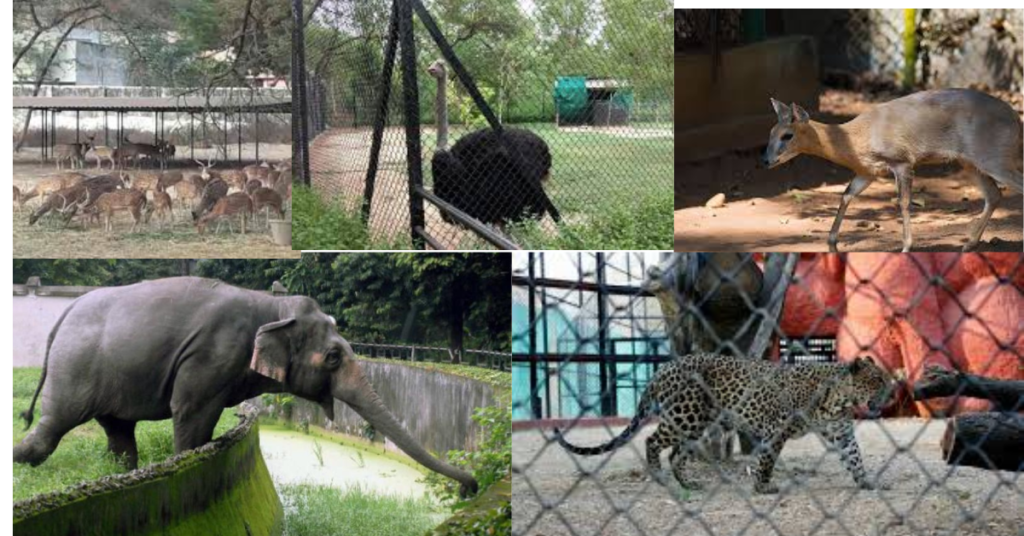
Wildlife Rehabilitation Kakatiya Zoological Park plays a crucial role in the rehabilitation of injured and orphaned wildlife. The park’s veterinary team is equipped to handle various medical needs, ensuring that animals receive the care they need before being released back into the wild or moved to suitable habitats.
Breeding Programs The park is involved in breeding programs for endangered species. The goal of these initiatives is to safeguard the survival of these animals and boost their number. The park collaborates with other zoos and conservation organizations to achieve these goals.
Habitat Restoration Efforts are made to restore and maintain natural habitats within the park. This involves planting native species, managing invasive species, and ensuring that the habitats provide a suitable environment for the resident wildlife.
Visitor Experience
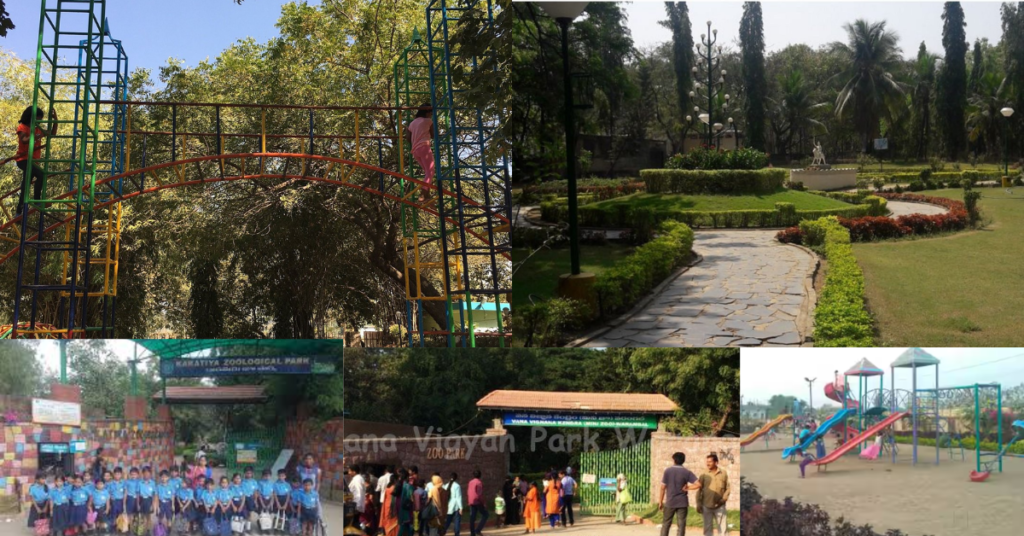
Visitor Centers: Provide information about the park, its history, and animals; offer educational materials and guides.
Children’s Play Area: Features playground equipment and educational elements about wildlife.
Picnic Spots: Scenic areas with benches and tables for relaxing and dining.
Cafeterias and Refreshment Stands: Serve a variety of snacks and beverages.
Souvenir Shops: Sell educational books, toys, and locally made handicrafts.
Timings and Entry Fees
- Timings:
- Opening Hours: Typically from 9:00 AM to 5:00 PM.
- Closed Days: Often closed on Mondays or public holidays. Verify before visiting.
- Entry Fees:
- Adults: Approx. ₹20-₹30.
- Children: Approx. ₹10-₹20.
- Photography Fees: Additional charges may apply for photography. Verify current rates on arrival.
Location and Accessibility
Kakatiya Zoological Park,
Near Lankapalli Village,
Warangal District,
Telangana, India.
Nearby Landmarks:
- Kakatiya Fort: Approximately 12 km north. A historical site that might be of interest if you are exploring Warangal.
- Bhadrakali Temple: Around 10 km north-west. An important pilgrimage site and tourist attraction in Warangal.
Visitor Guidelines
- Behavior: Do not disturb or feed the animals. Follow all posted rules and guidelines to ensure the safety of both visitors and animals.
- Photography: Ensure that you follow the park’s rules on photography. Some areas may have restrictions.
- Littering: Dispose of waste properly in designated bins to help maintain the park’s cleanliness.
Conclusion
Kakatiya Zoological Park, or Vana Vigyan Park, is a vital part of Warangal’s natural and cultural landscape. It offers a unique blend of recreation, education, and conservation, making it a valuable resource for the region. Through its diverse attractions, educational programs, and conservation efforts, the park plays a crucial role in promoting environmental awareness and protecting the region’s biodiversity. Whether you are a wildlife enthusiast, a nature lover, or simply looking for a peaceful place to relax, Kakatiya Zoological Park has something to offer for everyone.
Frequently Asked Questions
A: The park is typically open from 9:00 AM to 5:00 PM.
A: The park features lions, tigers, leopards, deer, and various bird species.
A: Yes, it is accessible by local taxis, auto-rickshaws, and public buses.
A: The cooler months from October to March are ideal for visiting.
A: Yes, the park conducts educational programs on wildlife conservation.

